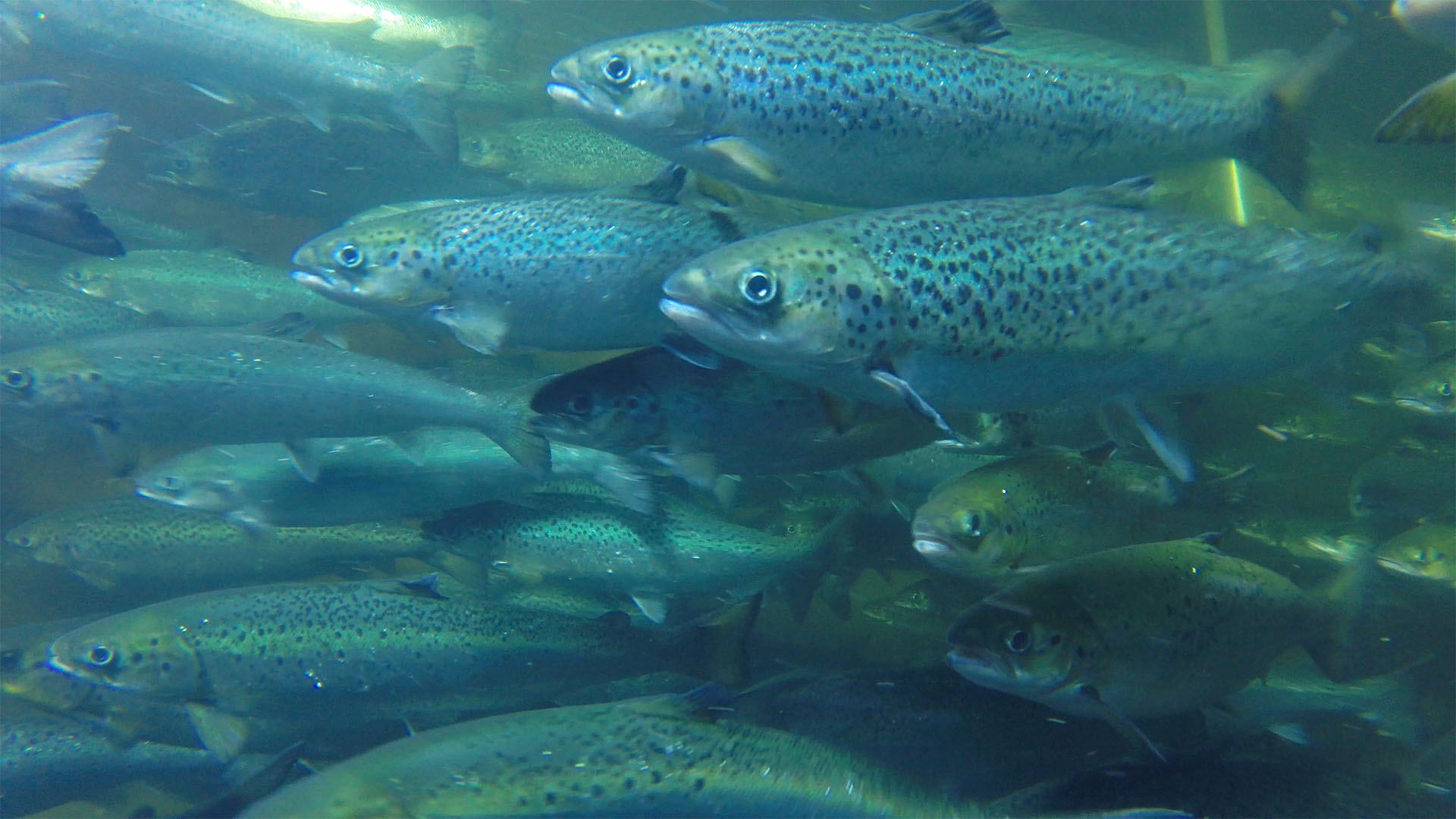THE LIFE CYCLE OF THE SALMON

We are often asked about the details of how exactly our salmon are reared. To give you a detailed insight into our salmon farm, we have summarised all the information about the rearing stages here.
Salmon egg hatches into salmon larva
Six times a year, 40,000 salmon eggs are flown in from Iceland. These are laid in the hatchery in Lostallo and hatch into salmon larvae after a few days. The salmon larvae have a yolk sac from which they obtain their food for 6 weeks. The salmon larvae are then transferred to a freshwater tank where they are fed for the first time.
You are currently viewing a placeholder content from YouTube. To access the actual content, click the button below. Please note that doing so will share data with third-party providers.
More InformationRearing up to the size of 100g takes place in various large freshwater tanks and lasts 10 months. They are then transferred to brackish water tanks (a mixture of fresh and salt water, similar to estuaries in the sea).
You are currently viewing a placeholder content from YouTube. To access the actual content, click the button below. Please note that doing so will share data with third-party providers.
More InformationGradual increase in the salt content of the water
During 2 months in brackish water, the salt content of the water is gradually increased. During this time, the skin changes colour to dark above and silver below. The young salmon also change organically and can now filter out salt water through their gills and kidneys. This process is called “smoltification” and is necessary to survive in salt water.
You are currently viewing a placeholder content from YouTube. To access the actual content, click the button below. Please note that doing so will share data with third-party providers.
More InformationHuge saltwater tanks with 2 rings
The salmon are then channelled from the brackish water tank into the large saltwater tank. The large saltwater tank has an inner and outer ring.
You are currently viewing a placeholder content from YouTube. To access the actual content, click the button below. Please note that doing so will share data with third-party providers.
More InformationHuge propellers ensure a good current, salmon are migratory fish and love to swim against the current. (diameter 32 m / depth 7 m).
You are currently viewing a placeholder content from YouTube. To access the actual content, click the button below. Please note that doing so will share data with third-party providers.
More InformationPurging and harvesting
Ideally, they reach a size of 3.5 to 4 kg after 24 months. The salmon are then transferred to the sobering tank and spend a week in this freshwater tank without feeding. This feeding diet calms the fish and improves their quality. In addition, the gastrointestinal tract is emptied during this time, which has hygienic advantages for fish processing.
You are currently viewing a placeholder content from YouTube. To access the actual content, click the button below. Please note that doing so will share data with third-party providers.
More InformationThe salmon are electrically stunned for harvesting. They are therefore not conscious when they are killed with a targeted gill cut.
You are currently viewing a placeholder content from YouTube. To access the actual content, click the button below. Please note that doing so will share data with third-party providers.
More Information


